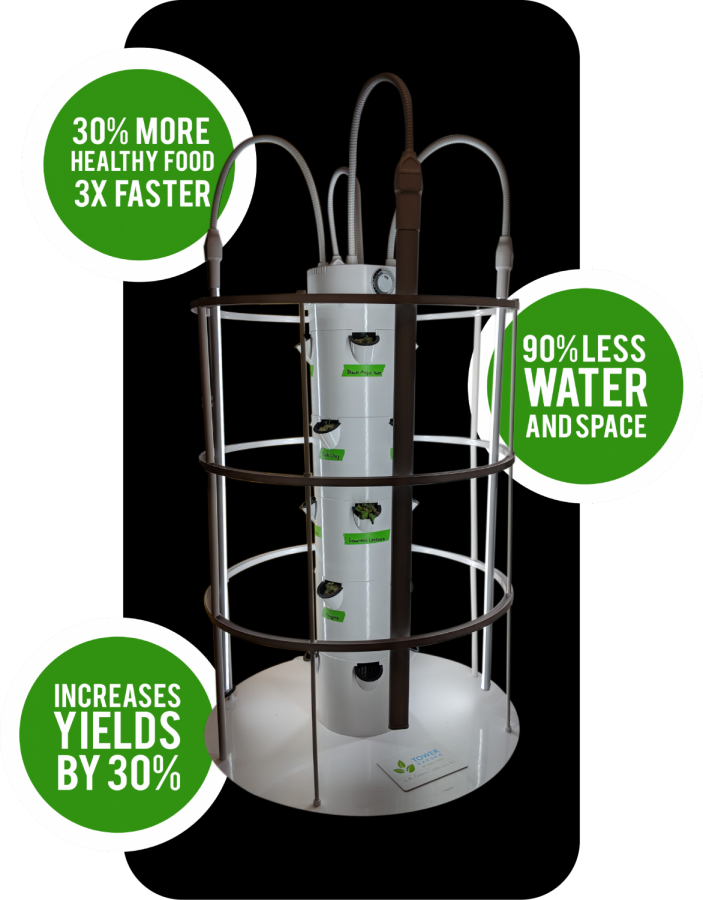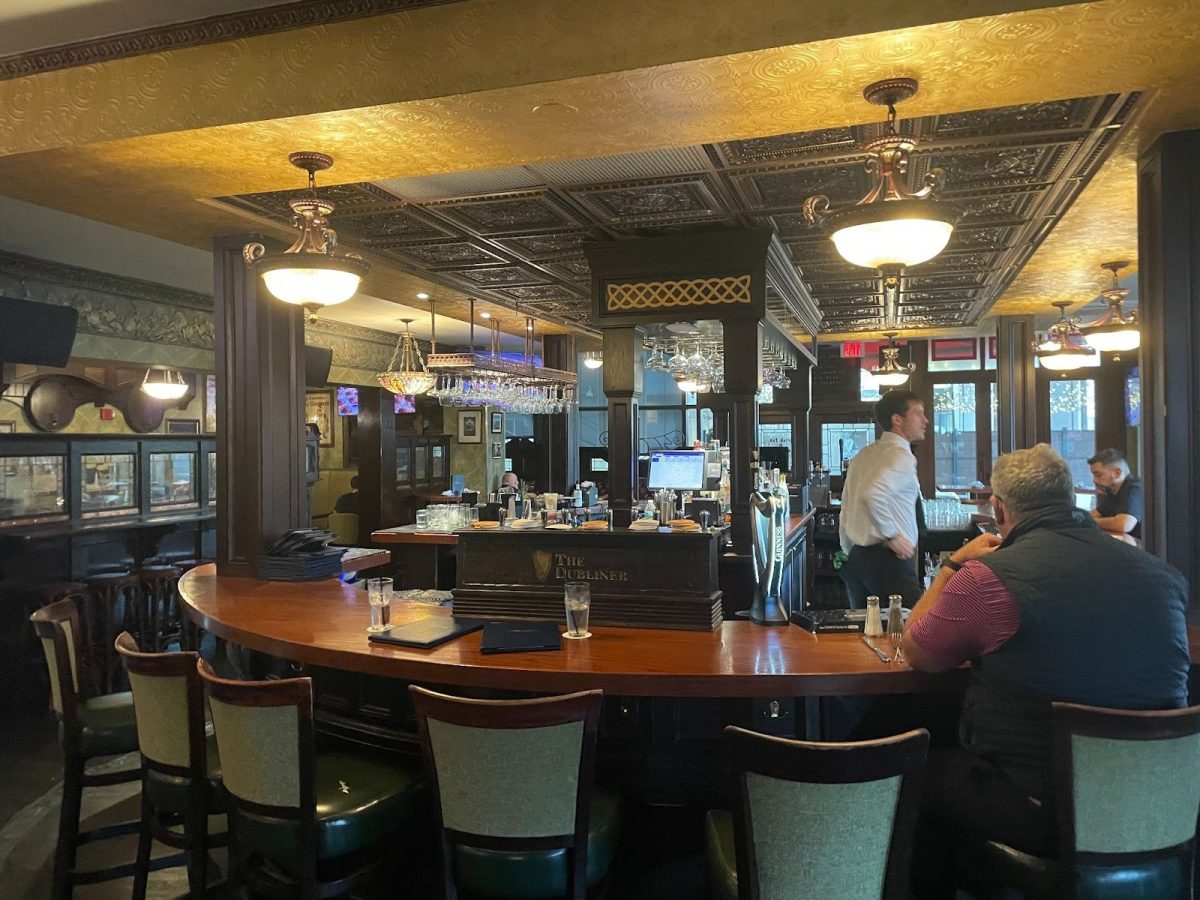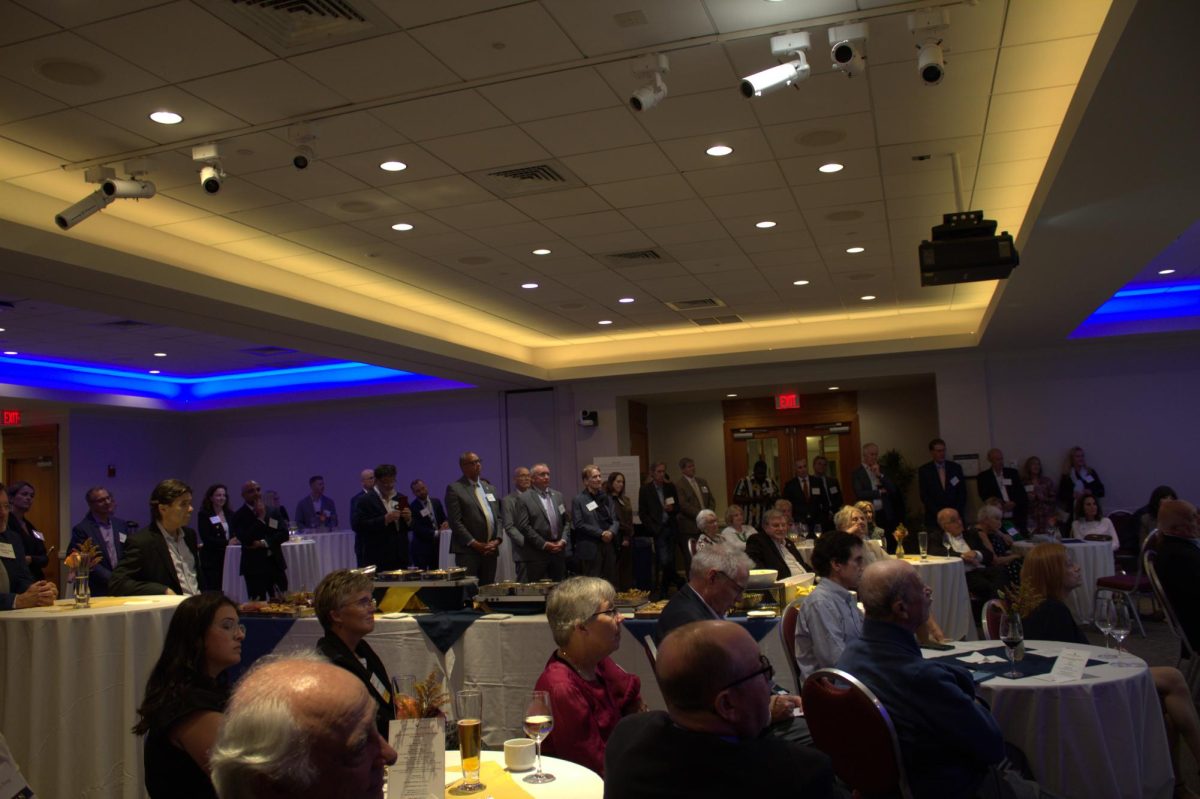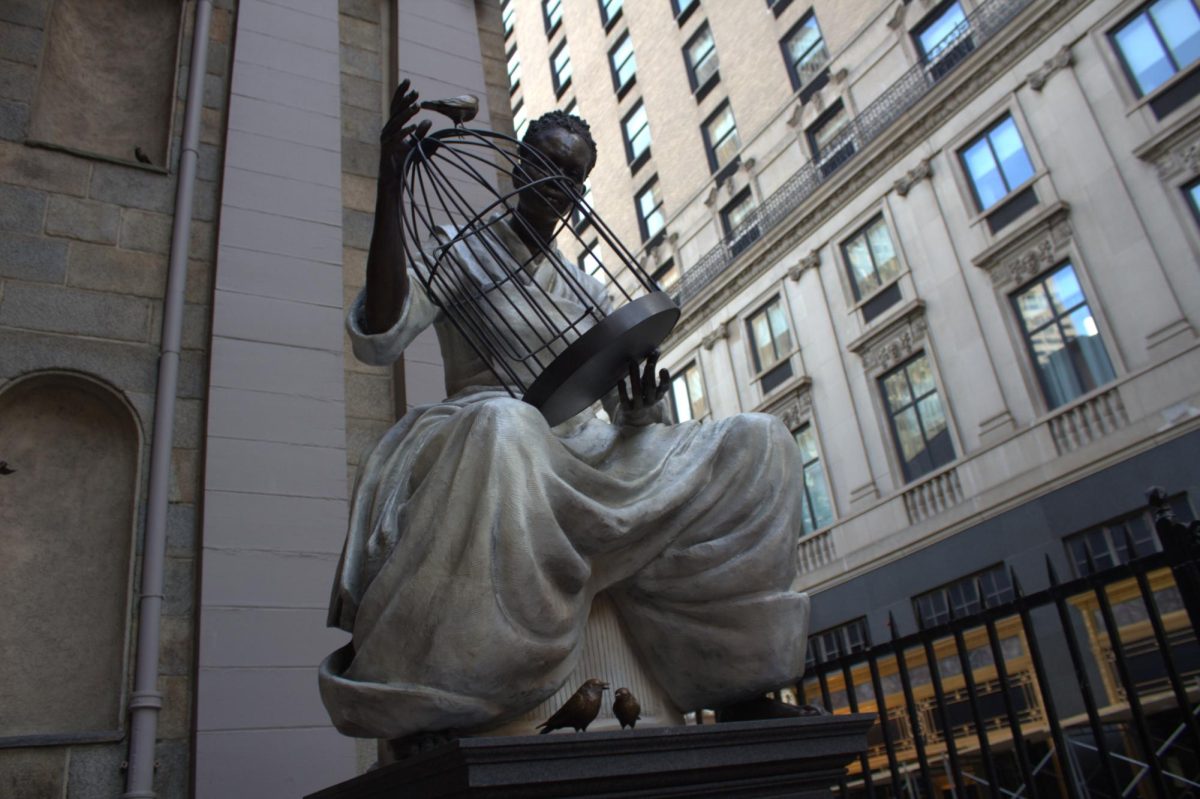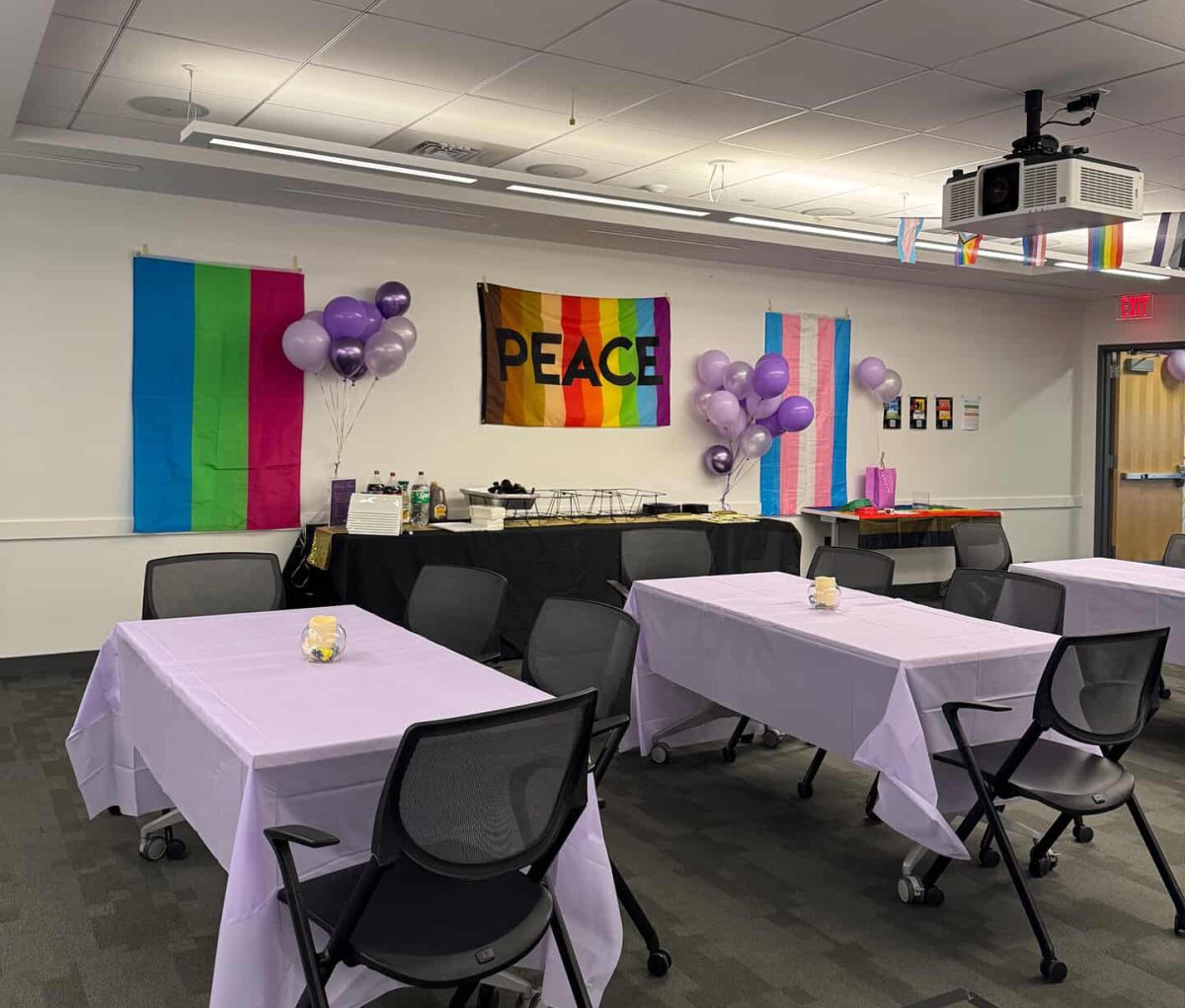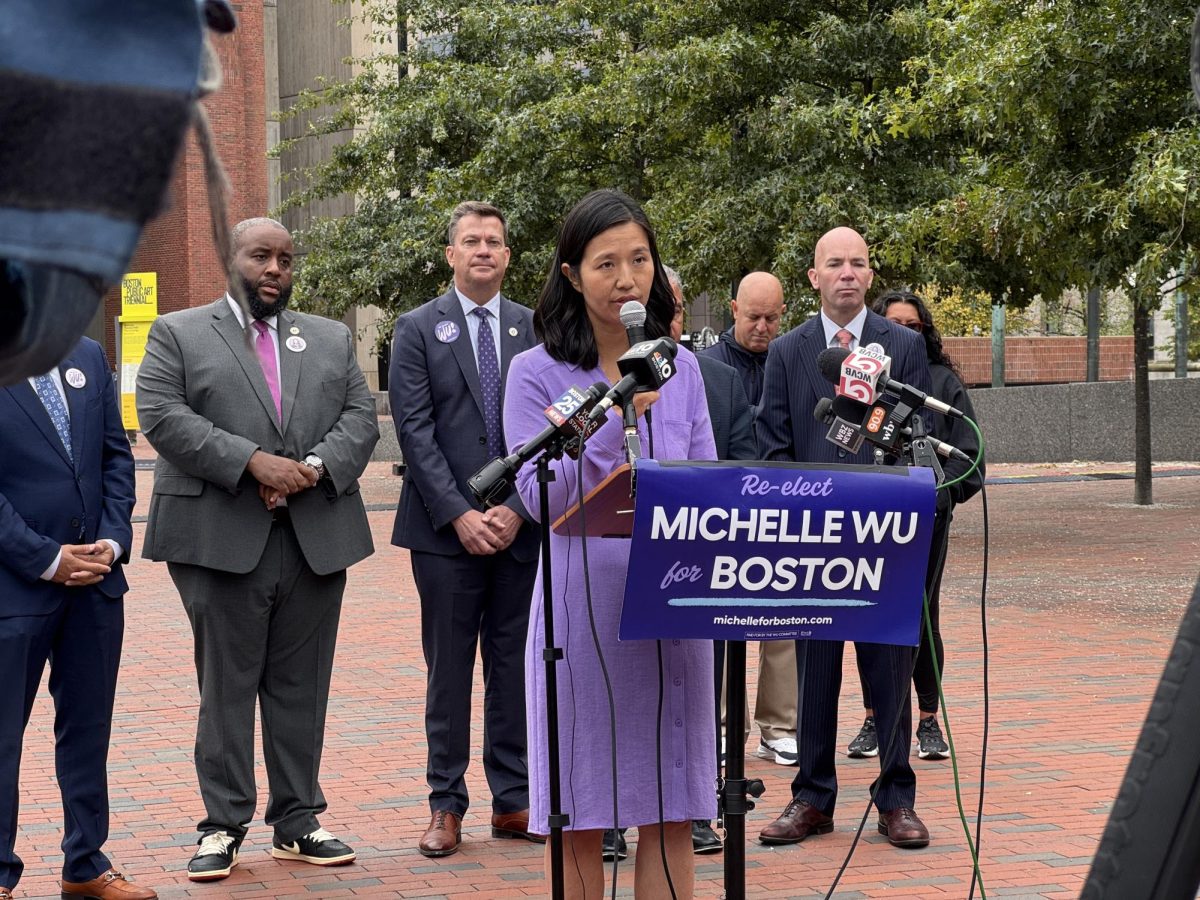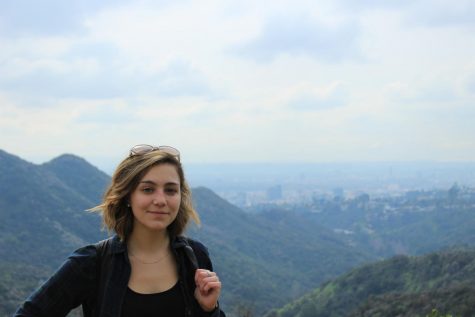As progressive urban cities around the world are creating more sustainable environments and increasing green-spaces for citizens, Suffolk University’s Center for Urban Ecology and Sustainability (CUES) is making the campus more ecologically aware with the inclusion of a new hydroponically powered tower garden.
In September, Professor Patricia Hogan, head of the CUES department, organized the purchase of the tower garden for the department and gave it to Suffolk’s Environmental Club to set up and manage. The club created a sub-committee called the Garden Committee, which will oversee the tower and future garden projects.
Environmental Club President and senior environmental science major Dakota Ennis explained the benefits of having plants and gardens in cities.
“It’s important to have green spaces in urban areas because they are important to reduce depression and anxiety. It preserves the little nature that we have left in the city,” said Ennis in an interview with The Suffolk Journal. “For this little garden we have here in the building it will hopefully be able to do the same thing.”
The tower itself is almost completely self-sustainable. At the bottom of the tower is a large tub filled with nutrient-infused water. The water is tested to ensure that it has the proper pH balance needed for the plants. The water then flows through the top of the tower and waters the plants on a timer.
“We can get students back in touch with nature, and we can show them that even though we are in a city environment, we can still grow plants,” said senior environmental science major and art history minor Teresa Feijoo in an interview with The Journal.
“The tower can help the community learn about ecology and urban sustainability, which I think would be extremely impactful. It could also help people become interested in botany and plants,” said Feijoo.
Feijoo has been a part of the Environmental Club since its inception and was chosen to head the Garden Committee by CUES Professor Hayley Schiebel, the club’s advisor.
“The tower gives students in the club a sense of purpose, it is nice for them to not just be going to club meetings,” said Schiebel in an interview with The Journal. “It gives Teresa a chance to have some leadership. It is something she is very passionate about, and when she leaves next year a new student will come up and get to have that leadership role too.”
After spending two months over the summer working in the Vegetation Center at Grand Canyon National Park, Feijoo was uniquely qualified to set-up and manage the Garden Committee.
The hydroponic tower is growing several edible plant species including lettuce, bok choy, rainbow chard and basil. Currently, the plants have finished germinating, and Feijoo has almost completed the process of transplanting the vegetables into the tower.
“Once the germinated plants are installed into the tower, that is pretty much all you can do. But I also do the maintenance on the tower, cleaning, making sure the pH level is balanced and making sure plants are healthy,” Feijoo said.
Looking into the future, Feijoo also discussed the possibility of inviting students to come and eat some of the food produced by the garden.
“It could really help us spread the word about what urban gardens can do,” Feijoo said.
Ennis is hopeful that the project will bring more awareness to the CUES department.
“I don’t think a lot of people know what the CUES department is or what the environmental department does,” Ennis said. “I think it might just be a cool way for people to be a part of what we do as a club and department here on campus.”
Currently, the committee is focused on the existing tower but they are eventually hoping to expand the project by getting more plants and potentially expanding into a rooftop garden, according to Ennis.
“Hopefully we can expand whatever we grow here to on top of the building,” said Ennis.
Feijoo hoped that Suffolk students from any department would visit and spend time with the garden tower, which is tucked away in the CUES department, room 515 in the Somerset building.
“It’s for everyone to see, anyone can come in and check it out. We decided to have it in the office room so people could study in there and be relaxed by it,” said Feijoo.
Ennis agreed with this sentiment, saying that the room could be filled with plants in addition to the tower, and that the small space can be somewhere that people can come and just hang out and enjoy the greenery.
“This project is our baby,” Schiebel said. “It gives [the club] something we can take ownership of and lets us metaphorically plant some seeds for the department’s future.”


